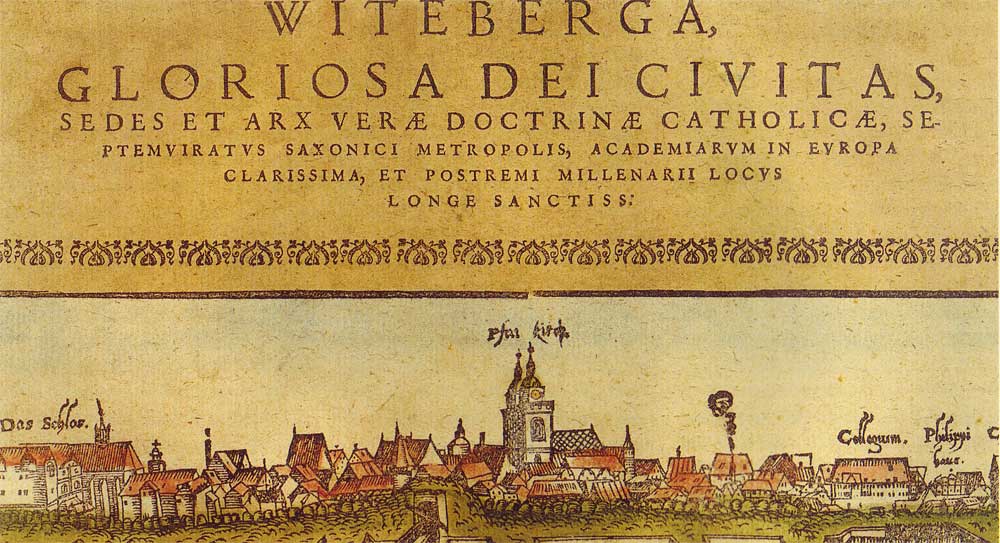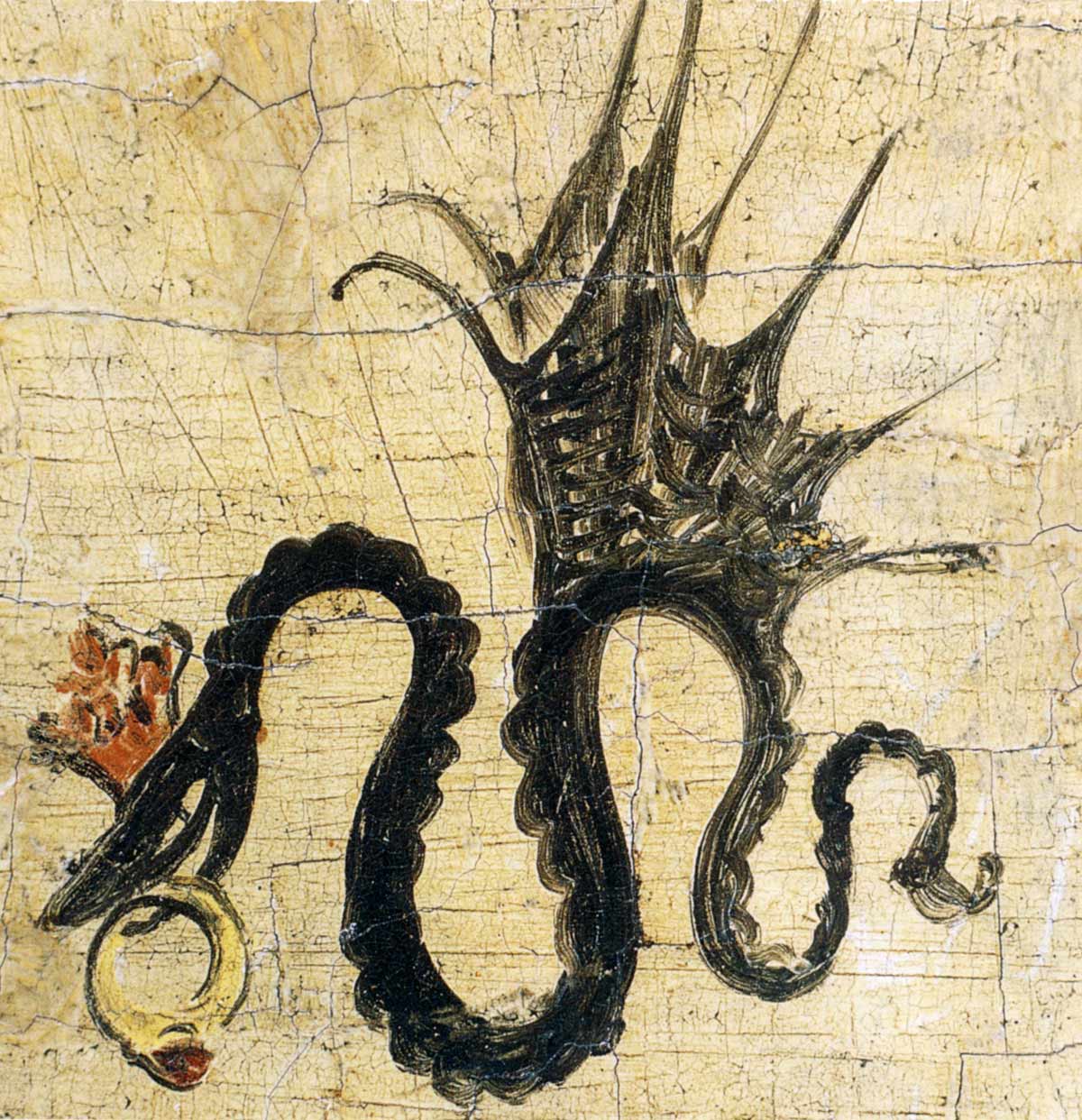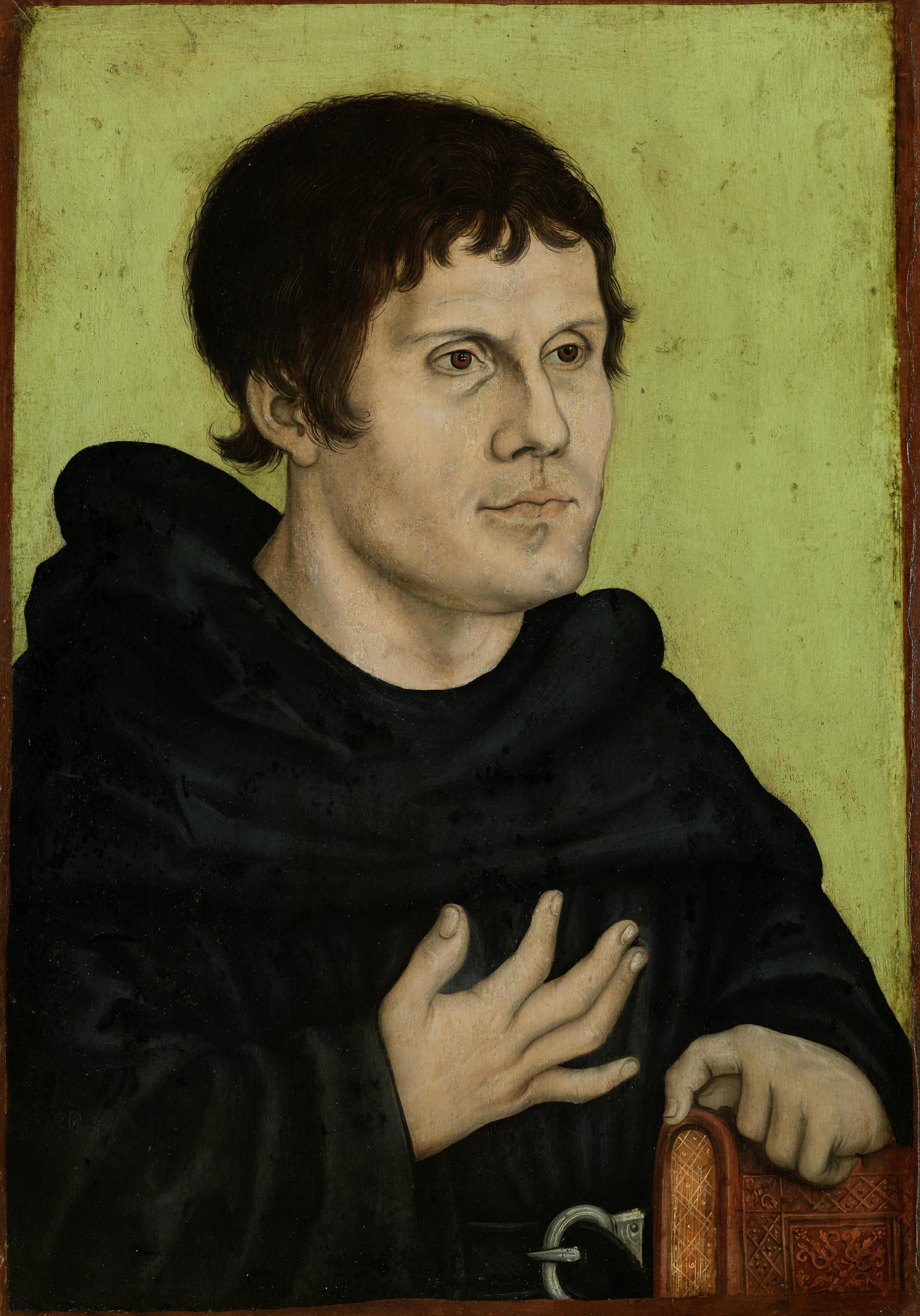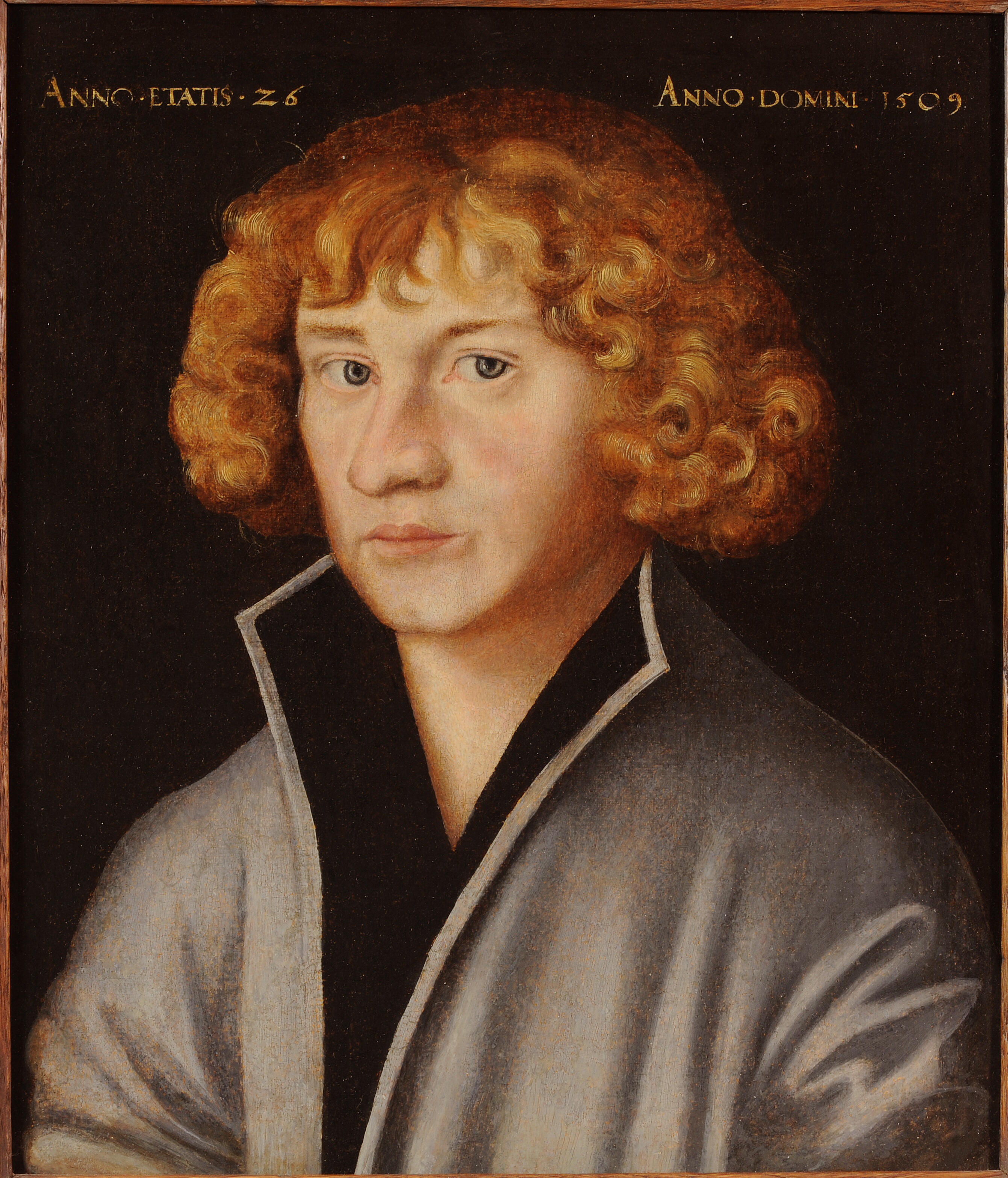|
John Frederick I, Elector Of Saxony
John Frederick I (, 30 June 1503 – 3 March 1554), called the Magnanimous (), was the Elector of Saxony (1532–1547) until he was deprived of this title in the Capitulation of Wittenberg by Charles V, Holy Roman Emperor. He was leading the Schmalkaldic League, a military alliance of Lutheran principalities. Early years John Frederick was the eldest son of John, Elector of Saxony by his first wife, Sophie of Mecklenburg-Schwerin. His mother died fourteen days after his birth, on 12 July 1503. John Frederick received his education from George Spalatin, whom he highly esteemed during his whole life. Spalatin was Martin Luther's friend and advisor and thus, through Spalatin's schooling, John Frederick developed a devotion to the teachings of Luther. His knowledge of history was comprehensive, and his library, which extended over all sciences, was one of the largest in Germany. He cultivated a personal relationship with Luther, beginning to correspond with him in the days when ... [...More Info...] [...Related Items...] OR: [Wikipedia] [Google] [Baidu] |
Lucas Cranach The Elder
Lucas Cranach the Elder ( ; – 16 October 1553) was a German Renaissance painter and printmaker in woodcut and engraving. He was court painter to the Electors of Saxony for most of his career, and is known for his portraits, both of German princes and those of the leaders of the Protestant Reformation, whose cause he embraced with enthusiasm. He was a close friend of Martin Luther, and Portrait of Martin Luther (Lucas Cranach the Elder), eleven portraits of that reformer by him survive. Cranach also painted religious subjects, first in the Catholic tradition, and later trying to find new ways of conveying Lutheran religious concerns in art. He continued throughout his career to paint nude subjects drawn from mythology and religion. Cranach had a large workshop and many of his works exist in different versions; his son Lucas Cranach the Younger and others continued to create versions of his father's works for decades after his death. He has been considered the most successfu ... [...More Info...] [...Related Items...] OR: [Wikipedia] [Google] [Baidu] |
Maurice, Duke Of Saxony
Maurice (21 March 1521 – 9 July 1553) was Duke of Saxony, Duke (1541–47) and later Prince-elector, Elector (1547–53) of Electorate of Saxony, Saxony. His clever manipulation of alliances and disputes gained the Albertine branch of the Wettin dynasty extensive lands and the electoral dignity. 1521–1541: Infancy and youth Maurice was the fourth child but first son of the future Henry IV, Duke of Saxony, then a Catholic, and his Protestantism, Protestant wife, Catherine of Mecklenburg, Catherine of Mecklenburg-Schwerin. Henry was the younger brother of George, Duke of Saxony. In December 1532, Maurice, aged 11, came to live at the castle of his godfather, Cardinal (Catholicism), Cardinal Albert of Mainz, Albert of Brandenburg, Archbishop of Magdeburg and Mainz. For two years, he lived a contemplative life until his uncle Duke George demanded his return to Saxony. George began the training of the future duke and educated him as a Catholic. But in 1536 Maurice's father conver ... [...More Info...] [...Related Items...] OR: [Wikipedia] [Google] [Baidu] |
John The Steadfast
John (30 June 146816 August 1532), known as John the Steadfast or John the Constant (''Johann, der Beständige''), was Elector of Saxony from 1525 until 1532 from the House of Wettin. He is notable for organising the Lutheran Church in the Electorate of Saxony from a state and administrative level. In that, he was aided by Martin Luther, whose "Saxon model" of a Lutheran church was also soon to be implemented beyond Saxony, in other territories of the Holy Roman Empire. Luther turned to the Elector for secular leadership and funds on behalf of a church largely shorn of its assets and income after the break with Rome.Brecht, 2:260–63, 67; Mullett, 184–86. He played a part in the Protestation at Speyer. Biography Born in Meissen, John was the fifth of the seven children of Ernest, Elector of Saxony and Elisabeth of Bavaria. From 1486 onward he was the heir presumptive of his childless brother Frederick the Wise. John received a part of the paternal inheritance and afterwar ... [...More Info...] [...Related Items...] OR: [Wikipedia] [Google] [Baidu] |
Landgraviate Of Hesse
The Landgraviate of Hesse () was a principality of the Holy Roman Empire. It existed as a single entity from 1264 to 1567, when it was divided among the sons of Philip I, Landgrave of Hesse. History In the early Middle Ages, the territory of Hessengau, named after the Germanic Chatti tribes, formed the northern part of the German stem duchy of Franconia, along with the adjacent Lahngau. Upon the extinction of the ducal Conradines, these Rhenish Franconian counties were gradually acquired by Landgrave Louis I of Thuringia and his successors. After the War of the Thuringian Succession upon the death of Landgrave Henry Raspe in 1247, his niece Duchess Sophia of Brabant secured the Hessian possessions for her minor son Henry the Child. In 1264 he became the first Landgrave of Hesse and the founder of the House of Hesse. The remaining Thuringian landgraviate fell to the Wettin's Henry III, Margrave of Meissen. Henry I of Hesse was raised to the status of prince by King Adolf ... [...More Info...] [...Related Items...] OR: [Wikipedia] [Google] [Baidu] |
Veit Warbeck
Veit Warbeck (1490–1534) was a German scientist and diplomat, born in Schwäbisch Gmünd. He is best known as the translator into German of the French ''Magelone'', a narrative text itself derived from the ''One Thousand and One Nights'' material. In turn, Ludwig Tieck adapted Warbeck's translation for his '' Liebesgeschichte der schönen Magelone und des Grafen Peter von Provence''. Warbeck worked as a diplomat at the court of John Frederick I, Elector of Saxony, when he translated the ''Magelone'' in 1527; his work on that text was occasioned by John Frederick's marriage to Sibylle of Cleves. The book was printed by Heinrich Steyner in Augsburg Augsburg ( , ; ; ) is a city in the Bavaria, Bavarian part of Swabia, Germany, around west of the Bavarian capital Munich. It is a College town, university town and the regional seat of the Swabia (administrative region), Swabia with a well ... in 1535, and was reprinted more than twenty times that same century, evidence of its p ... [...More Info...] [...Related Items...] OR: [Wikipedia] [Google] [Baidu] |
Excommunication
Excommunication is an institutional act of religious censure used to deprive, suspend, or limit membership in a religious community or to restrict certain rights within it, in particular those of being in Koinonia, communion with other members of the congregation, and of receiving the sacraments. It is practiced by all of the ancient churches (such as the Catholic Church, Oriental Orthodoxy, Oriental Orthodox churches and the Eastern Orthodoxy, Eastern Orthodox churches) as well as by other Christian denominations; however, it is also used more generally to refer to similar types of institutional religious exclusionary practices and shunning among other religious groups. The Amish have also been known to excommunicate members that were either seen or known for breaking rules, or questioning the church, a practice known as shunning. Jehovah's Witnesses use the term disfellowship to refer to their form of excommunication. The word ''excommunication'' means putting a specific indiv ... [...More Info...] [...Related Items...] OR: [Wikipedia] [Google] [Baidu] |
Martin Luther
Martin Luther ( ; ; 10 November 1483 – 18 February 1546) was a German priest, Theology, theologian, author, hymnwriter, professor, and former Order of Saint Augustine, Augustinian friar. Luther was the seminal figure of the Reformation, Protestant Reformation, and his theological beliefs form the basis of Lutheranism. He is widely regarded as one of the most influential figures in Western world, Western and History of Christianity, Christian history. Born in Eisleben, Luther was ordained to the Priesthood in the Catholic Church, priesthood in 1507. He came to reject several teachings and practices of the contemporary Catholic Church, Roman Catholic Church, in particular the view on indulgences and papal authority. Luther initiated an international debate on these in works like his ''Ninety-five Theses'', which he authored in 1517. In 1520, Pope Leo X demanded that Luther renounce all of his writings, and when Luther refused to do so, Excommunication in the Catholic Church, ... [...More Info...] [...Related Items...] OR: [Wikipedia] [Google] [Baidu] |
George Spalatin
Georg(e) Spalatin () was the pseudonym taken by Georg Burkhardt (; 17 January 1484 – 16 January 1545), a German humanist, theologian, Protestant Reformer, reformer, secretary of the Saxon Elector Frederick the Wise, as well as an important figure in the history of the Protestant Reformation, Reformation. Biography Burkhardt was born at Spalt (from which he took the Latinized name "Spalatinus"), near Nuremberg, where his father was a tanner. He went to Nuremberg for his education when he was thirteen years of age, and soon afterward to the University of Erfurt, he received his bachelor's degree in 1499. There he attracted the notice of Nikolaus Marschalk, the university's most influential professor, who made Spalatin his amanuensis and took him to the new University of Wittenberg in 1502. There he lived in quarters on the Schlossplatz just east of Schlosskirche, Wittenberg.Plaque commemorating Spalatin, Wittenberg In 1505 Spalatin returned to Erfurt to study jurisprudenc ... [...More Info...] [...Related Items...] OR: [Wikipedia] [Google] [Baidu] |
Schmalkaldic League
The Schmalkaldic League (; ; or ) was a military alliance of Lutheranism, Lutheran Prince of the Holy Roman Empire, principalities and cities within the Holy Roman Empire during the mid-16th century. It received its name from the town of Schmalkalden, where the group was founded in 1531. Although created for religious motives soon after the start of the Reformation, its members later came to have the intention that the League would replace the Holy Roman Empire as their focus of political allegiance. While it was not the first alliance of its kind, unlike previous formations, such as the League of Torgau, the Schmalkaldic League had a substantial military to defend its political and religious interests. Origins The League was officially established on 27 February 1531 by Philip I, Landgrave of Hesse, and John Frederick I, Elector of Saxony, the two most powerful Protestant rulers in the Holy Roman Empire at the time. It originated as a defensive religious alliance, with the ... [...More Info...] [...Related Items...] OR: [Wikipedia] [Google] [Baidu] |
Charles V, Holy Roman Emperor
Charles V (24 February 1500 – 21 September 1558) was Holy Roman Emperor and Archduke of Austria from 1519 to 1556, King of Spain (as Charles I) from 1516 to 1556, and Lord of the Netherlands as titular Duke of Burgundy (as Charles II) from 1506 to 1555. He was heir to and then head of the rising House of Habsburg. His dominions in Europe included the Holy Roman Empire, extending from Germany to northern Italy with rule over the Austrian hereditary lands and Burgundian Low Countries, and Spain with its possessions of the southern Italian kingdoms of Naples, Sicily and Sardinia. In the Americas, he oversaw the continuation of Spanish colonization and a short-lived German colonization. The personal union of the European and American territories he ruled was the first collection of realms labelled " the empire on which the sun never sets". Charles was born in Flanders to Habsburg Archduke Philip the Handsome, son of Maximilian I, Holy Roman Emperor and Mary of Burg ... [...More Info...] [...Related Items...] OR: [Wikipedia] [Google] [Baidu] |
Capitulation Of Wittenberg
 The Capitulation of Wittenberg () was a treaty on 19 May 1547 by which John Frederick I, Elector of Saxony, was compelled to resign the title of prince-elector, elector. The Electorate of Saxony and most of his territory, including Wittenberg, passed from the elder Ernestine line to the cadet Albertine line of the House of Wettin.
Wittenberg had become the focus of the Protestant Reformation. In 1517, Martin Luther had nailed his The Ninety-Five Theses, 95 Theses against Indulgences on the door of the castle church at Wittenberg, the opening act of the Reformation. In 1520 he burned the papal bull condemning him, and in 1534 the first Lutheran Bible was printed there. The Elector of Saxony was the most important patron of the Lutheran Reformation.
In 1547, Emperor Charles V, Holy Roman ...
The Capitulation of Wittenberg () was a treaty on 19 May 1547 by which John Frederick I, Elector of Saxony, was compelled to resign the title of prince-elector, elector. The Electorate of Saxony and most of his territory, including Wittenberg, passed from the elder Ernestine line to the cadet Albertine line of the House of Wettin.
Wittenberg had become the focus of the Protestant Reformation. In 1517, Martin Luther had nailed his The Ninety-Five Theses, 95 Theses against Indulgences on the door of the castle church at Wittenberg, the opening act of the Reformation. In 1520 he burned the papal bull condemning him, and in 1534 the first Lutheran Bible was printed there. The Elector of Saxony was the most important patron of the Lutheran Reformation.
In 1547, Emperor Charles V, Holy Roman ...
[...More Info...] [...Related Items...] OR: [Wikipedia] [Google] [Baidu] |





